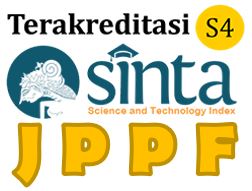Abstract
Education is essentially an activity carried out by students which results in changes in themselves. This principle implies that what must be prioritized is the learning activities of students instead of something that is given to students. STEM-based learning (Science, Technology, Engineering, and Mathematics) can train students to apply their knowledge to create designs as a form of solving environmental problems by utilizing technology. The learning model recommended for use in the 2013 curriculum is a student-centered learning model, one of which is the Project Based Learning model. This study will analyze how much influence STEM education with the PjBL model has on student learning outcomes. This study uses a meta-analysis method. determined via the Effect Size (ES). Research data were obtained from 25 national and international journals. The meta-analysis study is based on three categories, namely education level, subjects and student learning outcomes. The results showed that; first, the influence of the PjBL model of STEM education based on the level of education is most effective in SMP. ES value = 1.89 and categorized as high. Second, based on the type of subject, the most effective influence of the PjBL model of STEM education is Mathematics. ES value = 3,7 and categorized as high. Third, based on student learning outcomes, the influence of the PjBL model of STEM education is the most effective in the aspect of skills. ES value = 1.68 and categorized as high.




